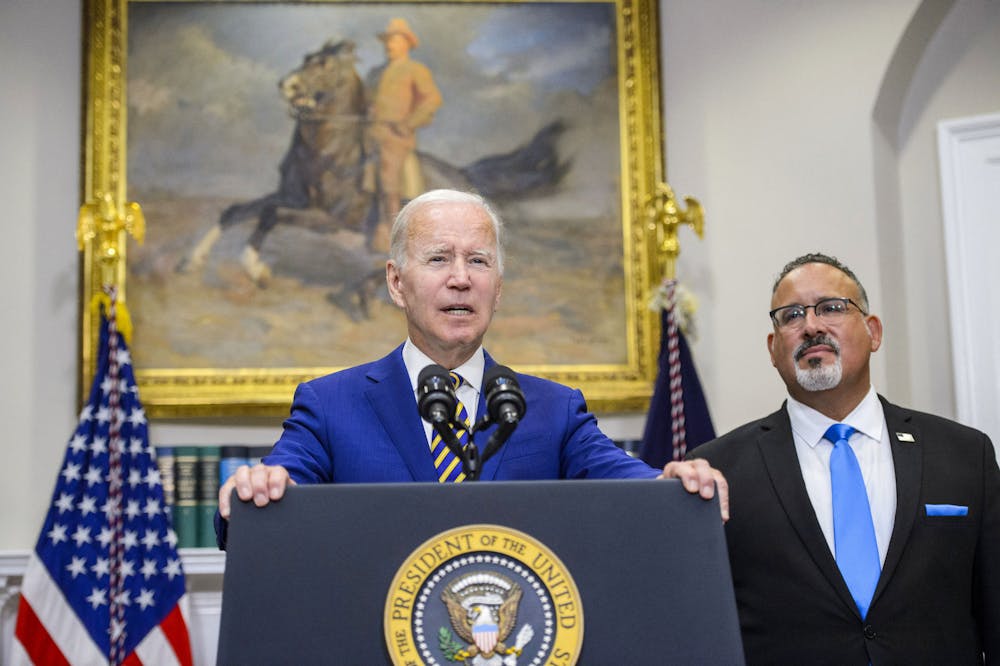The Biden-Harris administration announced July 14 that 804,000 federal borrowers will receive $39 billion in forgiveness for their student loan debt. The Department of Education has been discharging student loan debt as a part of President Joe Biden’s three-step plan for payment count adjustment.
Biden’s three-step debt relief plan aims to address financial harms from the pandemic, make student loans more manageable for all borrowers and reduce the cost of college for future students, according to a White House press release.
According to CNBC, in a 6-3 majority ruling, Biden’s plan was denied by the U.S Supreme Court June 30 after it was challenged by six states. Now the Biden administration is putting the SAVE plan into action. The SAVE plan will make changes to the REPAYE program to lower student loan monthly payments to as low as $0, according to The Hill.
[Related: What does the debt ceiling agreement mean for student loan payments?]
“At the start of this Administration, millions of borrowers had earned loan forgiveness but never received it,” U.S. Under Secretary of Education James Kvaal said in a U.S. Department of Education press release. “That’s unacceptable.”
Including the $39 billion discharged on Friday, the Department of Education has distributed over $116 billion in loan relief for over 3 million borrowers since August 24, 2022, according to a press release.
“My Administration has worked hard to secure the largest increases to Pell Grants in a decade, fixed broken loan programs such as Public Service Loan Forgiveness and created a new income-drive repayment plan that will cut undergraduate loan payments in half and bring monthly payments to zero for low-income borrowers,” Biden said in a press release July 14.
Currently, the federal student loan portfolio totals more than $1.6 trillion owed by approximately 43 million borrowers, according to NASDAQ. The federal student loan portfolio represents billions of dollars in Title IV loans, including direct loans, Federal Family Education Loans and Perkins Loans from millions of borrowers, according to Federal Student Aid. This portfolio only includes U.S. citizens and eligible non-citizens.
[Related: IU Board of Trustees approves tuition, mandatory fees increase]
According to Federal Student Aid, to be eligible for this student loan forgiveness, an individual must meet the following requirements:
Borrower must have made 240 or 300 monthly payments or spent 20-25 years on an income-driven repayment plan or standard repayment plan. An income-driven payment plan sets loan payments at an amount that is intended to be affordable for the borrower based on their income;
Borrower’s annual income must have fallen below $125,000 for individuals or $250,000 for married couples.
“By fixing past administrative failures, we are ensuring everyone gets the forgiveness they deserve, just as we have done for public servants, students who were cheated by their colleges, and borrowers with permanent disabilities, including veterans,” U.S. Secretary of Education Miguel Cardona said in the U.S. Department of Education press release. “This Administration will not stop fighting to level the playing field in higher education.”
[Related: Supreme Court votes against affirmative action in college admissions]
Borrowers who are eligible will receive credit toward income-driven repayment plan forgiveness for any of the following:
Any month that a borrower was in repayment status, regardless of partial or late payments, the type of loan or repayment plan;
Any period that a borrower spent 12 consecutive months or more in forbearance;
Any months that a borrower spent 36 or more cumulative months in forbearance;
Any month spent in deferment prior to 2013, in-school deferment not included;
Any month spent in economic hardship or military deferments on or after January 1, 2013.
Eligible borrowers have received emails regarding their loan discharges starting Friday, July 14, according to CNBC. Once an email has been received, the borrower does not have to take any further action. The discharges will take effect 30 days after the email was sent. A new wave of notifications will be sent to those who qualify every two months.
[Related: Six major cases heard by SCOTUS in 2023]




